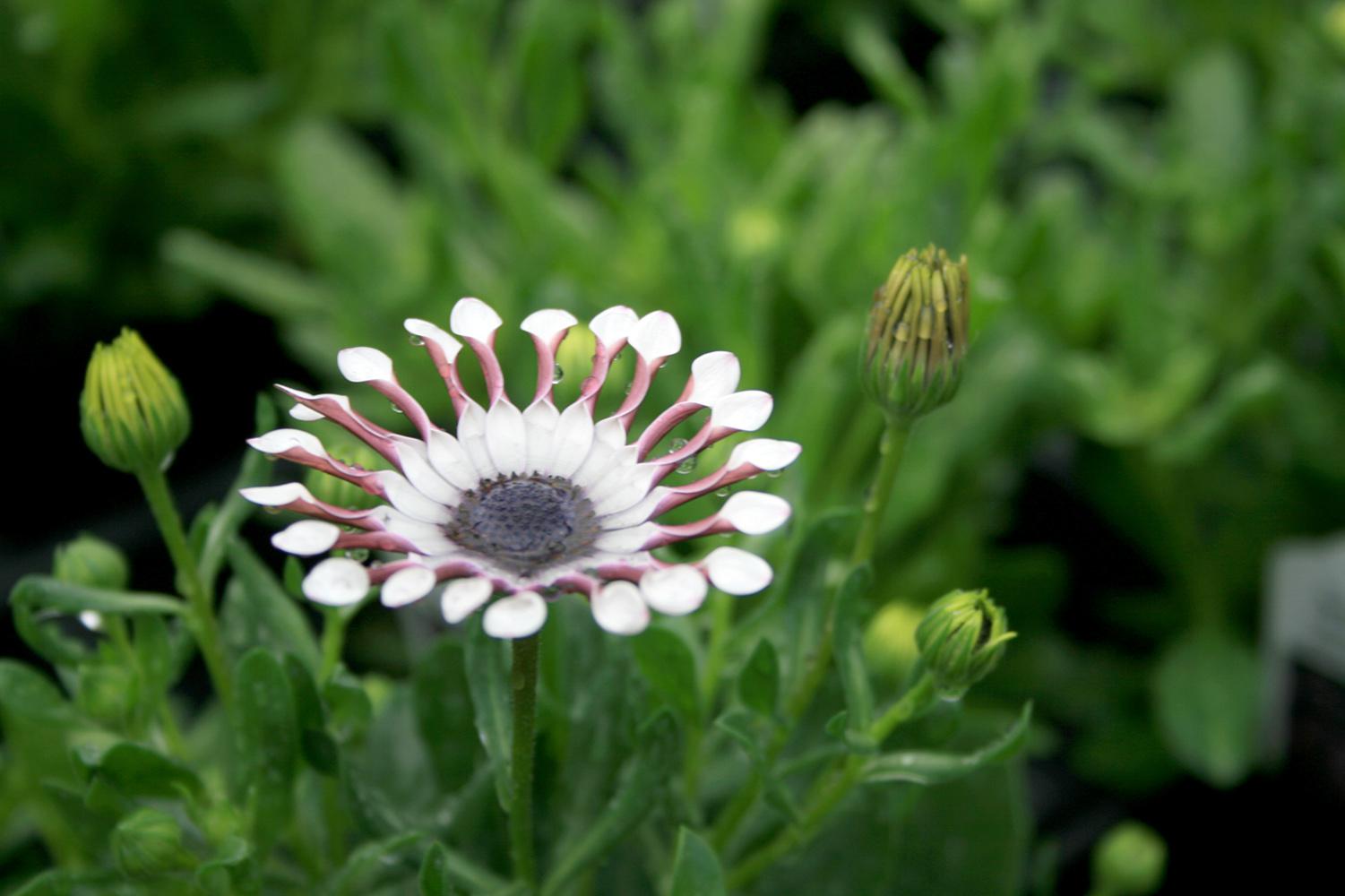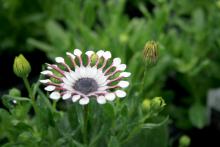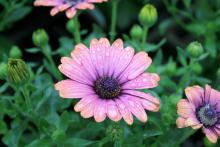Information Possibly Outdated
The information presented on this page was originally released on March 8, 2011. It may not be outdated, but please search our site for more current information. If you plan to quote or reference this information in a publication, please check with the Extension specialist or author before proceeding.
African daisies give outstanding flowers
Some of the prettiest flowers you can grow in the garden or in containers are African daisies, and these beauties are starting to arrive at garden centers.
Known botanically as Osteospermum, African daisies are outstanding flowering plants. These plants are from South Africa and are relatively new to many home gardeners. African daisies have the familiar center disk of the daisy family, but theirs are dark metallic. The brightly colored petals come in various shades of white, pink, yellow, blue and purple.
African daisies in the popular Serenity series grow 10 to 14 inches tall and reach up to 20 inches wide in the landscape. Serenity colors include improved pink, dark purple, lemonade, honey gold and lavender.
Two Serenity selections that have spoon-shaped petals are White Bliss and Lavender Bliss. Their unique shape shows the color contrast between the upper and lower surfaces of the petals.
One of the most striking African daisy selections is the Zion copper amethyst, which has good branching characteristics and flowers early in the season. With its petals of pastel lavender with copper-orange tips and a bright purple-blue speckled center with yellow stamens, this flower turns heads.
For the very best flowering, always plant in full sun. In coastal counties, African daisies tolerate growing in partial shade because of the warmer climate.
For landscape bed plantings, set out on 1-foot centers. This allows enough room for the plants to reach mature spreads, some greater than 14 inches, without crowding. African daisies also grow and flower well when placed in containers.
Water consistently to keep the soil from drying out too much, especially right after transplanting. It is crucial to maintain moist soil and potting media to have continual flowering.
African daisies need supplemental nutrition for ideal flowering and growth in the landscape. Use a water-soluble fertilizer weekly to promote continual flowering. Those grown in containers require a good slow-release, granular fertilizer in addition to the weekly water-soluble fertilizer applications.
Remove fading flowers to keep your African daisies blooming. As the summer heats up, the increased temperatures will cause the flowers’ size to decrease. When this happens, shear the plant back by one third and apply a heavy dose of water-soluble fertilizer. The plant will produce new growth and be ready to bloom again once temperatures start decreasing in the fall.
Although typically grown as an annual, African daisies can overwinter outdoors on the Coast. In cooler zones, place these plants indoors in a sunny window. Cut back before taking them outside the following spring.









